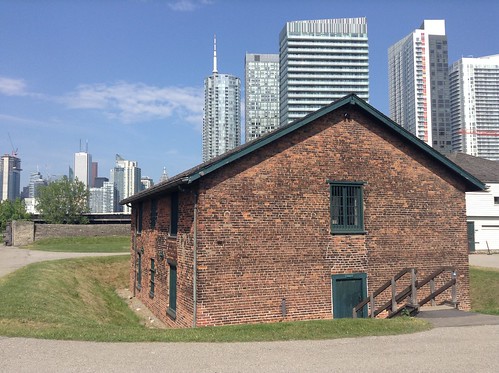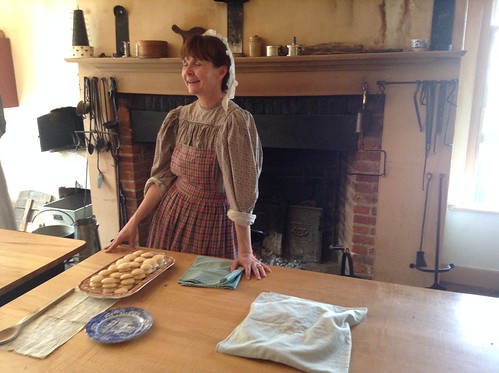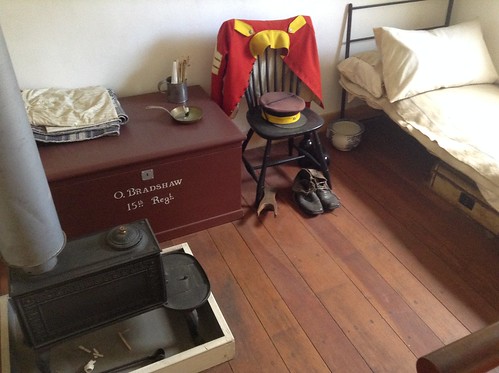Built in 1793, Fort York National Historic Site is the birthplace of urban Toronto. It is best known as the location where the Battle of York came to its violent climax in 1813 during the War of 1812. The Fort served as the city’s primary harbour defence between the 1790s and the 1880s, and was the home of a military garrison until the 1930s.
The settlement of modern Toronto began in 1793 when Lieutenant-Governor John Graves Simcoe built a garrison on the present site of Fort York. Fearful of war with the United States, Simcoe planned to establish a naval base at York (Toronto) so he could control Lake Ontario.
In 1807, Anglo American relations began to decline again. In anticipation of war, Major-General Isaac Brock strengthened Fort York in 1811. Today’s west wall and circular battery date from that time. In 1812, the United States declared war and invaded Canada. On the 27th of April 1813, the Americans stormed ashore west of the fort under the cover of their naval guns. The defenders put up a strong fight, but fell back to Fort York from the beachhead in the face of overwhelming odds. The Americans occupied York for six days. They looted homes, took or destroyed supplies, and burned the Parliament Buildings and Government House. In 1814, the British retaliated when they captured Washington and burned the Capitol, White House and other public buildings.
The British army continued to garrison Fort York after the war, although most of the troops moved to new barracks one kilometre west of the fort in 1841. During times of peace, Fort York’s defences were allowed to deteriorate, only to be strengthened at times of tension, such as the Rebellion Crisis of 1837-41, or when war with the United States seemed imminent, such as in 1861-62.
The City of Toronto purchased Fort York in 1909 and restored it between 1932-34. On Victoria Day 1934, Fort York opened as a historic site museum. Today the fortified walls surround Canada’s largest collection of original War of 1812 buildings.
The site’s eight heritage structures include defensible blockhouses, a bombproof gunpowder magazine, an ordnance store, and several soldiers’ and officers’ quarters, all of which represent the British army’s architecture as employed on the Canadian frontier in the Georgian era. Some buildings present restored interiors to reflect the lives of the garrison community, such as the graceful Officers’ Brick Barracks and Mess Establishment of 1815. Others, like Blockhouse Number Two from 1813, house museum exhibits that explore fascinating themes in Canadian military history.

























